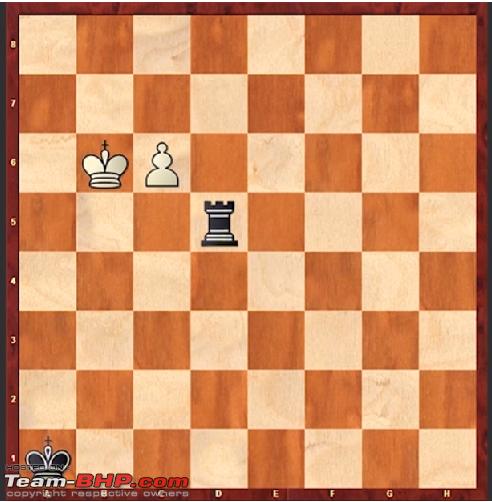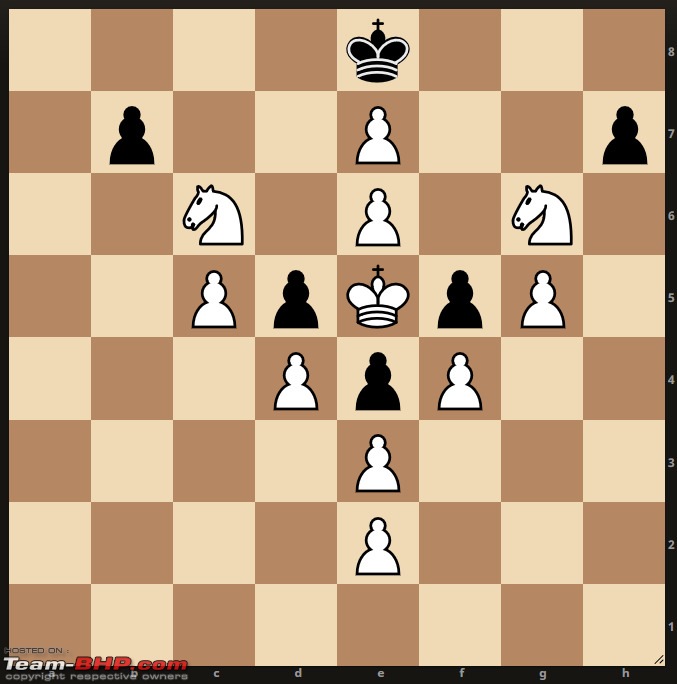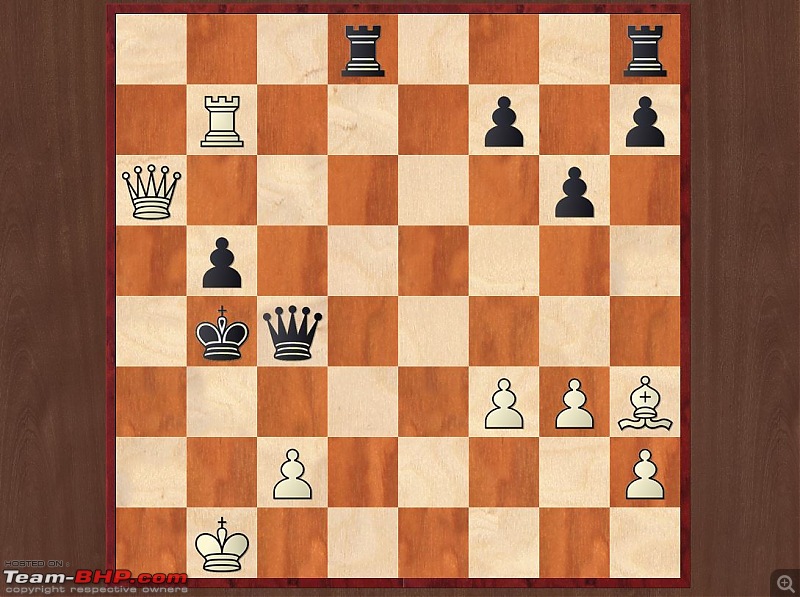Quote:
Originally Posted by Sutripta  ^^^
I think there was an AlphaZero - Stockfish game where it kept on sacrificing pawn after pawn, not for a well calculated combination, but for opening up the game. And won. |
There are two sets of AlphaZero - Stockfish games. One 100 game set in 2017, and another 1000 game set in 2019.
https://www.chess.com/news/view/goog...100-game-match https://www.chess.com/news/view/upda...000-game-match
I have not studied these games, so I am not sure. 100 and 1000 are just way too many games for me to study :-)
However, it is virtually impossible that any modern computer (even the relatively lower rated ones) do not calculate a line. So "not for a well calculated combination" is just not possible, and more with AlphaZero. No engine will sacrifice even one pawn without seeing concrete benefits in return. They are after all driven by some kind of objective function (whether traditional engine or an AI engine like AlphaZero), and they can't speculatively sacrifice even one pawn without seeing the benefits in the objective function.
If you could please point out the game where you think it kept on sacrificing pawns, we could discuss the specifics.
Quote:
Originally Posted by SmartCat  Some random chess questions:
1) Can we beat a Grandmaster if they play against ordinary folks like us with their Queen missing at the start?
2) Will you sacrifice a Queen for two rooks?
3) What do your prefer generally -> defend & hope that opponent makes a mistake, or attack straight away?
4) Will the above strategy change if the opponent is stronger?
5) At later stages of the game, do you prefer a knight or a bishop? Would you exchange one for another?
6) Typically, how many moves do you think ahead - especially in mid and later stages of the game? |
My random thoughts (again, others could have different opinions and we can debate) on these questions:
1. The answer will be purely speculative since I do not know of any queen odds games played by grandmasters. It depends on what we mean by the "ordinary folks". If we mean by someone who is a beginner (say 1300 rating), then most probably, yes, the GM will still beat this player without a queen. Although no queen odds, lot of GMs have played rook odds games (i.e. without a rook) with such ordinary people and defeated them almost every time. Now if we talk about someone rated above 1800, it might get tough for the GM without a queen, but still they might win anyways. Further, beyond 2000, it may not be possible for the GM to win without a queen. Also, it depends on whether queen is taken out right in the opening position and at some random position later. So lot of open questions and this really is way too speculative to say anything.
2. In most positions, yes! Two rooks are usually stronger than a queen, and in most positions, one would take two rooks for a queen. In fact, this is no way a "sacrifice". This is a more than welcome trade! However, there could be some exceptional cases where the queen is stronger than two rooks (say for example, if one of the rooks is stuck behind its own pawn). So again, the answer depends on the position, but 90% of the times, two rooks are stronger than a queen!
3. This is never a per-determined decision. You play the opening lines, and depending on how the opponent responds to your opening, you decide on attack or defense. For example, as Black, I play Sicilian Dragon, which is an extremely attacking line, and if White plays passively, then I get a good attack as Black. However, White in return can play a very attacking response to Dragon, known as Yugoslav attack. If White plays the Yugoslav attack, then Black has to be very careful and do the fine balance between defense and attack. Here in Yugoslav, if Black is careless, he can get crushed easily. On the other hand, if I play French Defense as Black (I used to play that a lot earlier, not now), then I must defend well and establish the right position before thinking of the attack. So it is all part of how the game develops and how the players respond to the openings.
4. Yes, definitely. The whole opening choice depends on whether your opponent is stronger or weaker, or whether he/she likes to play positional games or open games etc, and accordingly, the whole game changes.
5. This question has no one answer. This is one of the most well studied questions and there are chapters written on this. The answer is very complex and totally depends on the positions. And even in a given position, grandmasters would differ on what they prefer. In many openings, there are completely different theories when you decide to exchange the Bishop for Knight or not. To give an analogy, it is like asking in cricket, would you prefer a spinner or a fast bowler. It depends on so many things, and even in a given cricket match, two captains may differ in what they prefer. It is the same thing here.
6. It depends on the position. In a position with lot of forced continuations, a good player can see 10 moves ahead. A grandmaster can see 20 moves ahead. But when the position is closed with no forced line, this reduces. In certain endgames, you can maybe see 20 moves ahead. I am nowhere close to being a grandmaster, but I can see 10 moves ahead in some positions, and sometimes fail to calculate well 3 moves ahead in some very complex positions. In fact, this question is the most asked question to all chess players, and nobody can give any precise answer. Every chess player gives the same answer that "it depends".
For example, in the Problem 3 I shared above, it is actually a mate in 6, and I can calculate that 6 move combination easily in less than a couple of minutes. But there are so many other more complex positions where I may need 1 hour to calculate even a 3 move deep analysis.

 (2)
Thanks
(2)
Thanks
 (1)
Thanks
(1)
Thanks

 (1)
Thanks
(1)
Thanks

 (5)
Thanks
(5)
Thanks

 (2)
Thanks
(2)
Thanks
 (1)
Thanks
(1)
Thanks
 (2)
Thanks
(2)
Thanks

 (4)
Thanks
(4)
Thanks

 (2)
Thanks
(2)
Thanks

 (2)
Thanks
(2)
Thanks
 (3)
Thanks
(3)
Thanks
 (2)
Thanks
(2)
Thanks

 (4)
Thanks
(4)
Thanks

 (1)
Thanks
(1)
Thanks










